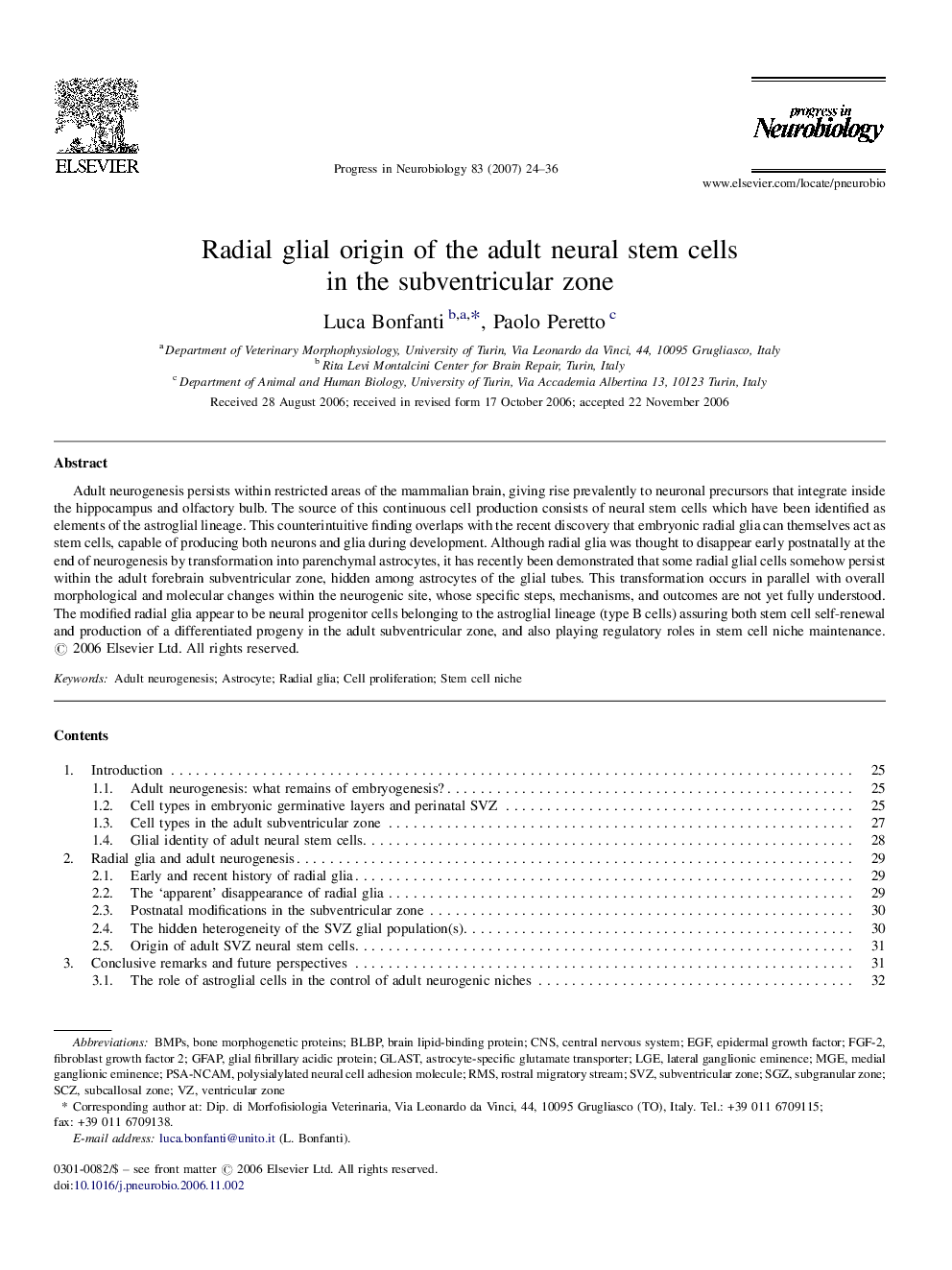| Article ID | Journal | Published Year | Pages | File Type |
|---|---|---|---|---|
| 4353957 | Progress in Neurobiology | 2007 | 13 Pages |
Adult neurogenesis persists within restricted areas of the mammalian brain, giving rise prevalently to neuronal precursors that integrate inside the hippocampus and olfactory bulb. The source of this continuous cell production consists of neural stem cells which have been identified as elements of the astroglial lineage. This counterintuitive finding overlaps with the recent discovery that embryonic radial glia can themselves act as stem cells, capable of producing both neurons and glia during development. Although radial glia was thought to disappear early postnatally at the end of neurogenesis by transformation into parenchymal astrocytes, it has recently been demonstrated that some radial glial cells somehow persist within the adult forebrain subventricular zone, hidden among astrocytes of the glial tubes. This transformation occurs in parallel with overall morphological and molecular changes within the neurogenic site, whose specific steps, mechanisms, and outcomes are not yet fully understood. The modified radial glia appear to be neural progenitor cells belonging to the astroglial lineage (type B cells) assuring both stem cell self-renewal and production of a differentiated progeny in the adult subventricular zone, and also playing regulatory roles in stem cell niche maintenance.
